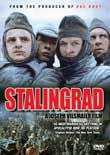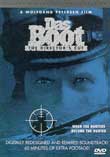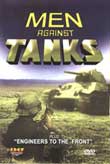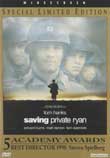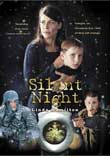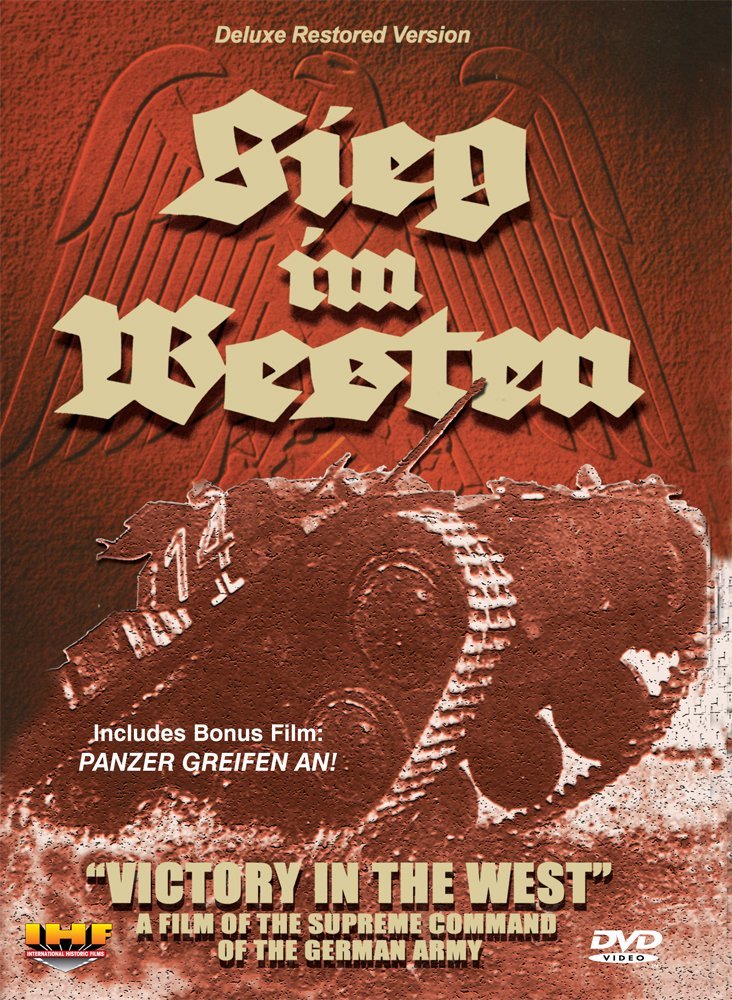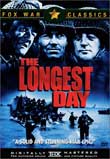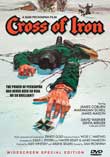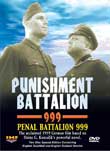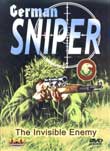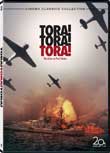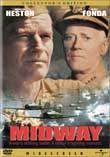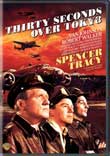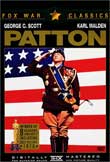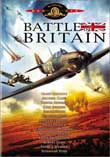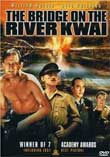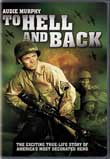

In the spring of 1942, German troops advanced deep into the Soviet Union en route to Stalingrad. Hitler seriously misjudged the tenacity of the Red Army and was convinced that the city could be conquered before winter. Ordinary foot soldiers, inadequately clothed and without sufficient food, struggled just to stay alive. Abandoned by their leaders, Nazi troops froze and starved to death in a conflict that left over one million dead. STALINGRAD graphically depicts this turning point in World War II as a vast tableau of horror in which the average German soldier was as much a victim of Nazi evil as the Soviet people.
Waugh! A really hard-core U-Boat movie! A butt-numbing 4 hours longm yet well worth it as this movie is so VERY authentic! Spooky. One of the "must haves" I talk about! This is probably the best U-Boat flick of ALL time, maybe sub movie of all time. And if you get the DVD, you can watch it in German w/ English subtitles—the ONLY way to watch this flick!
Plot: A German submarine patrols the Atlantic Ocean during World War II, manned by a crew that must contend with tense conflicts and long stretches of confined boredom. While war correspondent Werner (Herbert Grönemeyer) observes day-to-day life aboard the U-boat, the grizzled captain (Jürgen Prochnow) struggles to maintain his own motivation as he attempts to keep the ship's morale up in the face of fierce battles, intense storms and dwindling supplies.
Another nifty IHF offering (usually), Männer gegen Panzer! is a German training film that shows how to use all the Wehrmachtts anti-tank weapons. And they don't use models, all of these weapons are used for real, on real Soviet tanks!
Männer gegen Panzer (Men Against Tanks) is a 1943 German film, produced by Lehrfilm, which was used as a training film by the Wehrmacht. Its purpose was to show the German soldiers the different types of infantry anti-tank warfare. The duration of the film is 28 minutes.
The film consists of three parts. The first part shows a staged combined Soviet tank and infantry attack against entrenched German infantry. The attack is preceded by artillery and air strikes. The tanks, several T-34 model 1941/1942/1943 and a KV-1, are dealt with and destroyed by different means of improvised and dedicated anti-tank weaponry. Right and wrong approaches to destroy a tank single-handedly are displayed. At the end of the attack, Wilhelm Niggemeyer, a holder of the Knight's Cross of the Iron Cross with Oak Leaves and four tank destruction badges, is shown in action, destroying the KV-1 with a mine.
The second part shows how rear-service troops must be prepared for anti-tank warfare, as they too can encounter enemy tanks. The third part presents the Grosse Gewehrpanzergranate, Kampfpistole 42LP, Püppchen, Panzerfaust, Panzerschreck, their use and their effect against tanks.
The Soviet equipment used in the film, including uniforms and weapons, are authentic captured Soviet stock. The Soviet officer's uniforms were made before the 1943 reforms of the uniform. The only exception are the aircraft used, the AT-6, which were captured in the Battle of France.
During the Cold War the film was used for training purposes by several NATO armies.
When Steven Spielberg was an adolescent, his first home movie was abackyard war film. When he toured Europe with Duel in his 20s, he saw old men crumble in front of headstones at Omaha Beach. That image became the opening scene of Saving Private Ryan, his film of a mission following the D-day invasion that many have called the most realistic--and maybe the best--war film ever. With 1998 production standards, Spielberg has been able to create a stunning, unparalleled view of war as hell. We are at Omaha Beach as troops are slaughtered by Germans yet overcome the almost insurmountable odds.
A stalwart Tom Hanks plays Captain Miller, a soldier's soldier, who takes a small band of troops behind enemy lines to retrieve a private whose three brothers have recently been killed in action. It's a public relations move for the Army, but it has historical precedent dating back to the Civil War. Some critics of the film have labeled the central characters stereotypes. If that is so, this movie gives stereotypes a good name: Tom Sizemore as the deft sergeant, Edward Burns as the hotheaded Private Reiben, Barry Pepper as the religious sniper, Adam Goldberg as the lone Jew, Vin Diesel as the oversize Private Caparzo, Giovanni Ribisi as the soulful medic, and Jeremy Davies, who as a meek corporal gives the film its most memorable performance.
The movie is as heavy and realistic as Spielberg's Oscar-winning Schindler's List, but it's more kinetic. Spielberg and his ace technicians (the film won five Oscars: editing (Michael Kahn), cinematography (Janusz Kaminski), sound, sound effects, and directing) deliver battle sequences that wash over the eyes and hit the gut. The violence is extreme but never gratuitous. The final battle, a dizzying display of gusto, empathy, and chaos, leads to a profound repose. Saving Private Ryan touches us deeper than Schindler because it succinctly links the past with how we should feel today. It's the film Spielberg was destined to make
A great TRUE movie (okay, the art-geeks who made this flick DID change it some, but it IS based on a true story) about a group of German AND a group of American soldiers and a mother her son having Christmas together during the last Christmas of the war! Great story, okay movie! Linda Hamilton seems strange as the German Mother, but what the hey, it works!
Somewhere I have the original story and it is really great. I ried to get my friend Sara *the movie person) to make this movie back when, but she, like most movie people seemed to think it had to have more "drama." Sadly, when they made this movie, these idiots added crap like an "evyil" SS officer (like in a "Skorzeny") and they HAD to make the officer a bit too zealistic.
Still, the idea that this happened and it's true, is great. Worth buying and watching. Put it in your pantheon of Christmas movies.
Sieg im Westen (Victory in the West) was a German propaganda film, made to show the "glorious" conquest of France. Great footage, but this movie drags on (and on). It's best to watch Sieg im Westen with a few Kameraden and Bier or in a couple of sittings.
The Third Reich's most ambitious war documentary chronicles Hitler s lightning conquest of Holland, Belgium, and France in the spring of 1940. The six week campaign, marked by continuous combat and spectacular German victories, established the blitzkrieg as a bold strategy that revolutionized warfare. Before the offensive, the German high command deployed camera teams of hand picked professionals among various army groups poised to attack. Motorized and permitted unlimited access to the front, the correspondents recorded the onslaught from the perspective of the common soldier.
Editors combined this material with the best scenes from the newsreels and captured Allied footage to produce an authentic and riveting cinematic record of the campaign. The novel use of animated maps throughout the feature balances the soldier s eye view of battle with the strategic progress of military operations. Herbert Windt, renowned for elaborate orchestral compositions for the Riefenstahl epics Triumph des Willens and Olympia, provided an original score for the film.
The IHF program includes "Panzer Greifen An", a rare wartime featurette introduced by General Heinz Guderian covering the breakthrough at Sedan. An IHF audio slide show presents lesser known details about the west campaign and the making of Sieg im Westen.
The invasion of Normandy as told by Hollywood! A huge amount of famous actors (many in bit parts). For example, John Wayne is, of course, an American Airborne Colonel. This movie is neat because the Germans are actually speaking German and the uniforms are good. Unfortunately, (and as usual) Hollywood has taken license with many of the details. But what the heck, it's a good flick.
The Longest Day is Hollywood's definitive D-day movie. More modern accounts such as Saving Private Ryan are more vividly realistic, but producer Darryl F. Zanuck's epic 1962 account is the only one to attempt the daunting task of covering that fateful day from all perspectives. From the German high command and front-line officers to the French Resistance and all the key Allied participants, the screenplay by Cornelius Ryan, based on his own authoritative book of the same name, is as factually accurate as possible. The endless parade of stars (John Wayne, Henry Fonda, Robert Mitchum, Sean Connery, and Richard Burton, to name a few) makes for an uneasy mix of verisimilitude and Hollywood star-power, however, and the film falls a little flat for too much of its three-hour running time. But the set-piece battles are still spectacular, and if the landings on Omaha Beach lack the graphic gore of Private Ryan they nonetheless show the sheer scale and audacity of the invasion.
Cross Of Iron is a masterpiece, one of the greatest anti-war, anti-authoritarian movies. It is one of director Sam Peckinpah's two finest works -- the other being The Wild Bunch. It deserves to be ranked in the same great war movie company as Apocalypse Now, Das Boot, Full Metal Jacket, Paths Of Glory, Saving Private Ryan, Seven Samurai, and Zulu. Its setting on the World War Two Eastern Front, its gruesomeness, and its risk-taking viewpoint on ugly combat from the German side, have tended to count against fair assessment of its considerable artistic achievements. Viewers wary of the morality of its German viewpoint and its explicitness might find that it is fundamentally about humanity in general as a victim of war. The film reflects on the humanity which may be found on all sides of conflict--including Russian humanity portrayed variously as relentless, innocent, brave, and feminine.
Cross Of Iron opens with an intense, chilling montage of children's song, propaganda vision, combat newsreel and atrocity. By the end of the main title this montage subtly introduces the central characters, a German reconnaissance unit patrolling on the 1943 Russian front.
This 1977 film set rarely matched standards of cinematic mayhem. Cross Of Iron explosions don't look merely like pretty fireballs -- they blast fragments, rocks and debris, leaving no doubt as to why blood gouts from stumps of limbs and shrapnel-shredded entrails... Amid the screams of wounded and dying, as dust subsides from a mortar barrage, an artillery piece shorn of its crew by a near hit swings across a pocked battlefield, its traversing wheel spinning under its own momentum. The carnage occurs in the choreographed slow motion which Peckinpah made his signature.
James Coburn turns in one of his finest roles as Rolf Steiner, a highly decorated NCO who leads a German reconnaissance squad. Steiner fights less for his country than for his comrades. He has low opinions of class and rank distinctions. He is contemptuous both of Nazism and the aristocratic Prussian arrogance of his new superior officer, Captain Stransky, played with great style by Maximilian Schell. But there are hints of a dark side. Although Steiner is articulate and philosophical he has no answer when his love interest during an enforced break from battle, nurse Eva (Senta Berger), bitterly accuses him of being afraid of what he would be without the war.
Among the many fine supporting performances, James Mason plays the war-weary Colonel Brandt. He sees the immorality and futility of German war aims, but his sense of honour and duty about the prevailing struggle makes ceasing to fight unthinkable. David Warner plays Brandt's out-of-place and out-of-time adjutant, Captain Kiesel, who represents to his colonel the hope that a more enlightened postwar Germany might arise from the ashes of inevitable defeat.
War movie buffs irritated by the technical inaccuracies common in many examples of the genre will find some satisfaction in attention to authenticity of weaponry. A range of genuine WWII German and Russian small arms appears. The T 34/85 tanks are real, although the very picky might argue that this is at least six months premature, and that for the summer of '43 they should be T 34/76. Tactics at times deviate from the textbooks, but this is a drama, not a combat manual.
Cross Of Iron is a five-star movie. The Hen's Tooth Video release was a two-star DVD, with sub-standard picture and sound. It was worth owning only while this great film of a great American director lacked the high quality collectors' edition Zone 1 DVD release it deserves, or the far superior European DVD and Blu-ray releases it later received.
Update in September 2011: It appears that only the DVD and Blu-ray releases of this film for the European market - notably those published by Studio Canal - are good quality transfers, as well as being in the original widescreen aspect ratio. Studio Canal's Blu-ray release (encoded for Region B only) is significantly better even than their DVD. It shows so much more detail compared to the DVD releases, for example, that the lettering and designs of German military awards like the Krim and Kuban Shield shoulder insignia can be seen clearly on screen, and wine and beer bottle labels are easily read. The Blu-ray is available from Amazon.co.uk, but can be played only on Region B-capable Blu-ray decks. Extras on this Blu-ray include a gem, a documentary by Mike Siegel called "Passion & Poetry - Sam Peckinpah's War". This gives fascinating insight into the making of "Cross of Iron" and Peckinpah's directorial style through contemporary and later interviews with James Coburn, David Warner, Senta Berger, Maximilian Schell, Roger Fritz, Vadim Glowna, Katy Haber and Peckinpah himself. It includes a shot of Peckinpah reminiscing proudly about receiving a telegram from Orson Welles saying it was 'one of the finest war films ever made'. Welles was so right.
Two Disc Special DVD Edition: Containing English Subtitled & Dubbed Versions!
On the Eastern Front in World War 2, a German battalion fights Russian soldiers and partisans. But this is no ordinary battalion. These are soldiers being punished by the High Command for crimes like ordering retreats to save men's lives or working too hard to discover an anti-gangrene serum. These men are abused by their commanders, made to dig useless trenches under fire, and sent into a final suicidal mission. Their enemies are everywhere. This film is based on a novel by Heinz G. Konsalik and co-written by him. With unflinching realism it portrays these soldiers, their commanders, and the corruptions of the home front. Its Eastern Front setting is highly unusual for war films distributed in the US, as is its nightmarish, authentically-detailed view of war. Directed by Harald Philipp; featuring Werner Peters, George Thomas, and Sonja Ziemann.
Special 2 DVD disc set containing:
DISC 1: Original German Language Version: Complete and uncut, with original German dialogue and English subtitles. West Germany, 1959, B&W, 103 minutes,
DISC 2: English Dubbed Version: B&W, 92 Minutes.
This is actually a German training movie put on video tape. There is a wealth of field-craft tips in this movie, many of which are applicable to the common infantryman. Black and White, a combination of English dubbing or subtitles, depending on whether the translator thought the German dialog sounded interesting.
Silent, motionless and deadly, German snipers lurked on the European battlefields of World War 2, hunting enemy sharpshooters, supporting assaults and laying diabolical traps on defense. Drawn from two German military films directed in 1944, this program provides an overview on observation, movement and camouflage techniques; sniper and obsever teamwork, as well as instructions on how to operate efficiently in offensive and defensive tactical situations. Germany, 1944, B&W, 67 minutes, English commentary and subtitles.
The epic film shows the sneak-attack bombing of Pearl Harbor from both sides in the historic first American-Japanese co-production: American director Richard Fleischer oversaw the complicated production (the Japanese sequences were directed by Toshio Masuda and Kinji Fukasaku, after Akira Kurosawa withdrew from the film), wrestling a sprawling story with dozens of characters into a manageable, fairly easy-to-follow film. The first half maps out the collapse of diplomacy between the nations and the military blunders that left naval and air forces sitting ducks for the impending attack, while the second half is an amazing re-creation of the devastating battle. While Tora! Tora! Tora! lacks the strong central characters that anchor the best war movies, the real star of the film is the climactic 30-minute battle, a massive feat of cinematic engineering that expertly conveys the surprise, the chaos, and the immense destruction of the only attack by a foreign power on American soil since the Revolutionary War. The special effects won a well-deserved Oscar, but the film was shut out of every other category by, ironically, the other epic war picture of the year, Patton.
Oh yeah, don't mix Tora! Tora! Tora! up with the recent art-geek movie Pearl Harbor, Tora! Tora! Tora! much better and you don't have that commie ding-dong Alec Baldwin trying to portray a real American Hero—Jimmy Doolittle! I bet Jimmy Doolittle was SPINNING in his grave over that ;-(
In this dramatization of the Battle of Midway during World War II, U.S. Navy Adm. Chester Nimitz (Henry Fonda) leads an outnumbered unit in the Pacific to break Japanese encryption codes. They soon discover that Adm. Yamamoto (Toshirô Mifune) plans an ambush of the U.S. base on the island of Midway. Capt. Matt Garth (Charlton Heston) helps devise the Navy's strategy, while his pilot son, Tom (Edward Albert), falls in love with a Japanese-American woman who is headed for an internment camp.
The film chronicles the Battle of Midway, a turning point in World War II in the Pacific. The Imperial Japanese Navy had been undefeated until that time and out-numbered the American naval forces by four to one.
The film follows two threads; one centered around the Japanese chief strategist Admiral Isoroku Yamamoto (Toshiro Mifune), and the other around two fictional characters: Captain Matt Garth (Charlton Heston) and his son, Ensign Thomas Garth (Edward Albert), both naval aviators. Matt Garth is a senior officer who is involved in various phases of the US planning and execution of the battle, while Thomas Garth is a young pilot romantically involved with Haruko Sakura (Christina Kokubo), an American-born daughter of Japanese immigrants, who has been interned with her parents. Captain Garth calls in all of his favors with a long-time friend to investigate the charges against the Sakuras. He apparently has some success, as Haruko is free and at dockside when the injured younger Garth is carried off the ship at the end of the film, while Captain Garth himself was killed at the end of the battle when his plane crashed.
The film starts with the Doolittle raid, and so takes place before the Battle of the Coral Sea (which is only mentioned). It depicts the creation of a complicated battle plan. Unknown to the Japanese, American signals intelligence has broken the Japanese Naval encryption codes and know ahead of time that the ambush will take place at Midway Island which includes tricking the Japanese into confirming it. American Admiral Chester Nimitz (Henry Fonda), plays a desperate gamble by sending his last remaining aircraft carriers to Midway before the Japanese to set up his own ambush.
Successful in saving Midway, but at a heavy cost, Nimitz reflects that Yamamoto "had everything going for him", asking "were we better than the Japanese, or just luckier?"
Great true story, a little over-acted, but still great. About the Tokyo raid at the start of the war. 400 miles over the ocean, after launching LAND BOMBERS off of a Navy carrier!!! Great! Stars Van Johnson and Spencer Tracey as Jimmy Doolittle (much better than that anti-American ding-dong, Alec Baldwin wo portrayed Doolittle in Pearl Harbor).
Thirty Seconds Over Tokyo is a 1944 American war film released by Metro-Goldwyn-Mayer. It is based on the true story of the Doolittle Raid, America's first retaliatory air strike against Japan four months after the December 1941 Japanese attack on Pearl Harbor.
Mervyn LeRoy directed Thirty Seconds Over Tokyo and Sam Zimbalist produced the film. The screenplay by Dalton Trumbo was based on the 1943 book of the same name, written by Captain Ted W. Lawson, a pilot who participated in the raid. In both the book and the film, Lawson gives an eyewitness account of the training, the mission, and the aftermath as experienced by his crew and others who flew the mission on April 18, 1942. Lawson piloted "The Ruptured Duck", the seventh of 16 B-25s to take off from the aircraft carrier USS Hornet aka, "Shangri-La."
Thirty Seconds Over Tokyo stars Van Johnson as Lawson, Phyllis Thaxter as his wife Ellen, Robert Walker as Corporal David Thatcher, Robert Mitchum as Lieutenant Bob Gray and Spencer Tracy as Lieutenant Colonel Jimmy Doolittle, the man who planned and led the raid. The film is noted for its accurate depiction of the historical details of the raid, as well as its use of actual wartime footage of the bombers in some flying scenes.
Plot
In February 1942, just two months after the Pearl Harbor attack, the United States Army Air Forces plan to retaliate by bombing Tokyo and four other Japanese cities—taking advantage of the fact that US aircraft carriers can approach near enough to the Japanese mainland to make such an attack feasible.
Lt.Col. James Doolittle (Spencer Tracy), the leader of the mission, assembles a volunteer force of aircrews, who begin their top-secret training by learning a new technique to make their North American B-25 Mitchell medium bombers airborne in the short distance of 500 feet or less, to simulate taking off from the deck of an aircraft carrier.
After depicting the raiders' weeks of hazardous training at Eglin Field, Florida and Naval Air Station Alameda, the story goes on to describe the raid and its aftermath.
While en route to Japan, the Hornet?'?s task force is discovered by a Japanese picket boat, which has radioed their position. It is sunk, and the bombers are forced to take off 12 hours early at the extreme limit of their range. As they had to take off so early, after the attack, all but one of the B-25s run out of fuel before reaching their recovery airfields in China. As a result, their crews are forced to either bail out over China or crash-land along the coast.
Lawson's B-25 unfortunately crashes in the surf just off the Chinese coast while trying to land on a beach in darkness and heavy rain. He and his crew survive, badly injured, but then face more hardships and danger while being escorted to American lines by friendly Chinese. While he is en route, Lawson's injuries require the mission's flight surgeon to amputate one of his legs.
The story ends with Lawson being reunited with his wife Ellen in a Washington, D.C., hospital.
One of the greatest screen biographies ever produced, this monumental film runs nearly three hours, won seven Academy Awards, and gave George C. Scott the greatest role of his career. It was released in 1970 when protest against the Vietnam War still raged at home and abroad, and many critics and moviegoers struggled to reconcile current events with the movie's glorification of Gen. George S. Patton as a crazy-brave genius of World War II. Of course, since that time is over AND this is a website dedicated to portraying soldiers, it will get better light here. It's a good flick—get it!
[Has links to DVD and Blu-ray]
Featuring a "big stellar cast" (Variety), including Michael Caine, Trevor Howard, Laurence Olivier, Christopher Plummer, Michael Redgrave, Robert Shaw, Susannah York and Edward Fox, Battle of Britain is a spectacular retelling of a true story that shows courage at its inspiring best. Few defining moments can change the outcome of war. But when the outnumbered Royal Air Force defied insurmountable odds in engaging the German Luftwaffe, it may well have altered the course of history!
The Bridge on the River Kwai is a 1957 World War II film directed by David Lean, based on the novel Le Pont de la Rivière Kwai (1952) by Pierre Boulle. The film is a work of fiction but borrows the construction of the Burma Railway in 1942–43 for its historical setting. It stars William Holden, Jack Hawkins, Alec Guinness and Sessue Hayakawa. The movie was filmed in Ceylon (now known as Sri Lanka). The bridge in the film was located near Kitulgala.
Another WW2 classic! Do they even MAKE really good WW2 movies anymore? Anyway, if you haven't seen it, you need to. Shows "British-ness" at its best. Thhe plot is about POWs in Burma, who were forced to build a bridge to aid the war effort of their Japanese captors. The British colonel feels that they muxt build the best bridge possible to show the superiority of the British soldier. It's kin dof twisted, but a good movie.
The film was widely praised, winning seven Academy Awards (including Best Picture) at the 30th Academy Awards; in 1997 this film was deemed "culturally, historically, or aesthetically significant" and selected for preservation in the United States Library of Congress National Film Registry. It is widely considered to be one of the greatest films in history.
The true story of America's most-decorated hero of WWII! A bit hollywooded, but still pretty good! When are you ever going to see a great hero playing himself in his greatest moments? If Saving Private Ryan was too gory for you, here's a movie that shows the glory and pain of WWII, but without the gore. If your grade-school kids want to know about the soldiers of WWII without them having nightmares, have them see this film. Audie Murphy is great in this role -- even though it is his story, it becomes the story of ALL the soldiers (although Audie does have the best moments). The fight scenes are gripping, and it really does feel 'real' rather than 'staged'. We would also recommend that you read Audie Murphy's book of the same name to get the whole story. Definitely Audie Murphy was the greatest U.S. soldier in the 20th Century!
Pope Stefanus II arrives in Ponthion
Afonso IV succeeds Dionysius as King of Portugal
Calais, last English possession in France, retaken by French
Antonio "Michele" Ghislieri is elected Pope Pius V
Michaele Ghislieri is elected Pope Pius V
England signs an offensive and defensive alliance with Netherland
Last day of the Julian calendar in Bohemia and Holy Roman empire
Boris Godunov seizes Russian throne on death of Feodore I
Robert, Earl of Essex leads revolt in London against Queen Elizabeth
Fire destroys Jamestown, Virginia
Galileo discovers 1st 3 Jupiter satellites, Io, Europa and Ganymede
Francis Bacon becomes English lord chancellor
Germany and Transylvania sign Peace of Nikolsburg
Composer Pier Cavalli marries rich widow Maria Sosomeno
Fire after heavy storm destroys 2 / 3 of De Rijp Neth, 1 dies
Russian Czar Peter the Great departs Netherlands to England
Typewriter patented by Englishman Henry Mill (built years later)
Battle at Panipat India: Afghan army beats Mahratten
1st US commercial bank, Bank of North America, opens in Philadelphia
1st US seed business established by David Landreth, Philadelphia
1st balloon flight across English Channel (Blanchard & Jeffries)
2nd Bank of US opens
1st printing in Hawaii
Liberia colonized by Americans
1st US Railroad Station opens (Baltimore)
HMS Beagle anchors off Chonos Archipelago
Florida troops takeover Ft Marion at St. Augustine
Battle of Manassas Junction, Virginia
Romney Campaign-Stonewall Jackson march towards Romney, West Virginia
Arkansas constitutional convention meets in Little Rock
Mississippi constitutional convention meets in Jackson
Dutch King Willem II marries Emma von Waldeck-Pyrmont
Start of Sherlock Holmes adventure "Valley of Fear" (BG)
W B Purvis patents fountain pen
Mine explosion kills 100, Krebs, Okla-blacks trying to help rescue white survivors, driven away with guns
Hermann Sudermanns "Heimat, " premieres in Berlin
Motion picture experiment of comedian Fred Ott filmed sneezing
Fanny Farmer publishes her 1st cookbook
Start of Sherlock Holmes "Adventure of Blanched Soldier" (BG)
Marconi Co establishes "CQD" as 1st International radio distress signal
England beat Australia by one wicket at the MCG
Stanley Cup: Ottawa Senators sweep Galt (Ont) in 2 games
1st airplane bombing experiments with explosives, San Francisco
Dutch Scouts Organization established in Amsterdam
William M Burton patents a process to "crack" petroleum
1st steamboat passes through Panama Canal
German troops conquer Fort Vaux at Verdun
Baltimore Sun warns of Ku Klux Klan
Musical "Big Boy" with Al Jolson premieres in New York City
Coml transatlantic telephone service inaugurated between New York and London
Harlem Globetrotters play 1st game (Hinckley, Ill)
"Buck Rogers, " 1st sci-fi comic strip, premieres
"Tarzan, " one of the 1st adventure comic strips, 1st appears
1st telephone connection between Netherlands and East Indies
1st game played at Orchard Lake Curling Club, Michigan
1st edition of People and Fatherland published in the Netherlands
"Flash Gordon" comic strip (by Alex Raymond) debuts
Princess Juliana marries German Prince Bernhard von Lippe-Biesterfeld
Tennis champs Helen Moody and Howard Kinsley volley 2,001 times (1h18m)
WW II siege of Bataan starts
Air Force announces production of 1st US jet fighter, the Bell P-59
Lord Haw-Haw reports total German victory at Ardennen
Cambodia becomes autonomous state inside French Union
US President Truman raises taxes for Marshall-plan
1st photo of genes taken at University of Southern California by Pease and Baker
"Happy as Larry" closes at Coronet Theater NYC after 3 performances
Mental health wing of Mercy Hospital burns, kills 41 (Davenport Ia)
French Plevin government falls
President Truman announces development of hydrogen bomb
Marian Anderson becomes 1st black singer to perform at Met (NYC)
WCIQ TV channel 7 in Mt Cheaha, AL (PBS) begins broadcasting
Vinoo Mankad scores 231 vs. New Zealand, 413 opening stand with Roy
USSR shrinks army to 300,000
1st NFL Playoff Bowl (runner-up bowl) - Detroit beats Cleveland 17-16
Trucial States (now UAE) issue their 1st postage stamps
AFL Pro Bowl: West beats East 47-27
Assassination attempt on Indonesian President Sukarno, fails
Bollingen Prize for poetry awarded to John Hall Wheelock
1st class postage raised from 4 cents to 5 cents
Bahamas becomes self-governing
Dick Weber rolls highest bowling game in air (Boeing 707)
France announces it will convert $150 million of its currency to gold
Dance Theatre of Harlem debuts
Gene Kiniski beats Lou Thesz in St. Louis, to become NWA champ
"Newlywed Game" premieres on ABC TV
"GE College Bowl" quiz show premieres on NBC TV
1st class postage raised from 5 cents to 6 cents
US Congress doubles President salary
Farmers sue Max Yasgur for $35,000 in damages caused by "Woodstock"
LA Lakers chalk up 33rd consecutive win (NBA record)
Lewis F Powell Jr becomes a Supreme Court Justice
William Hubbs Rehnquist, sworn in as Supreme Court Justice
"Purlie" closes at Billy Rose Theater NYC after 14 performances
British Darts Organisation founded in North London
Johnny Watkins bowls six overs 0-21 vs. Pakistan Never again
US Poet James Merrill wins Bollingen Prize
WNPB TV channel 13 in Marquette, MI (PBS) begins broadcasting
Dutch rations gasoline
"Shenandoah" opens at Alvin Theater NYC for 1050 performances
Bollingen Prize for poetry awarded to AR Ammons (Sphere)
Led Zeppelin fans riot before Boston concert, causing $30,000 damage
Angola revises its constitution
Vietnamese forces capture Phnom Penh from Khmer Rouge
"Fame" premieres on NBC TV
Australia regain the Ashes with a 2-1 series win vs. England
Reagan ends US arms embargo against Guatemala
"King & I" opens at Broadway Theater NYC for 191 performances
KHQ-AM in Spokane WA changes call letters to KLSN (now KAQQ)
Chicago Bears defeat New England Patriots 46-10 in Super Bowl XX
Netherlands Bank issues 250 guilder notes
STS 61-C mission scrubbed at T -9m because of weather problems
US President Reagan proclaims economic sanctions against Libya
French airplanes harass Libyan positions in Duadi Doum
Kapil Dev takes his 300th Test wicket, at 28 the youngest
Akhito becomes Emperor of Japan
Cleveland Cavs block 21 New York Knick shots tying NBA regulation game record
International Conference on Limitation of Chemical Weapons opens in Paris
Lynn Jennings runs world record 5K indoor at 15:22.64
Tower Of Pisa closed to the public after leaning too far
"Nia Peeples Party Machine" premieres on TV
AT&T releases video-telephone ($1,499)
South Africa beat Australia in the Sydney Test by 5 runs
United Express commuter plane crashes in Ohio, killing 5
US female Figure Skating championship won by Tonya Harding
"Christmas Carol" closes at Richard Rodgers Theater NYC after 18 performances
"Passion" closes at Plymouth Theater NYC after 280 performances
"Crazy after You" closes at Shubert Theater NYC after 1622 performances
16th United Negro College Fund raises $12,600,000
Newt Gingrich, narrowly re-elected speaker of the House
